Introduction
Not all salt is created equal—and one type, in particular, has taken the wellness world by storm. Pink Himalayan salt, known for its striking pink hue and natural crystal structure, is more than just a decorative seasoning. Mined from ancient rock salt deposits deep within the Himalayan mountains, this unrefined mineral salt is often praised as one of the purest and healthiest alternatives to regular table salt.
Unlike heavily processed table salt, which typically contains synthetic additives and iodine, Himalayan pink salt contains over 80 trace minerals—including potassium, calcium, magnesium, and iron. These minerals give it its flavor, therapeutic appeal, and the potential to support multiple aspects of wellness. From promoting hydration and balancing electrolytes to improving sleep, digestion, and skin health, the health benefits of pink Himalayan salt are widely celebrated in natural health communities.
In this article, we’ll dive into the 9 Surprising Health Benefits of Pink Himalayan Salt Today, explore the science behind its rise, bust common myths, and show you how to use it effectively—from salt water remedies to detoxifying bath soaks and culinary uses.
 | 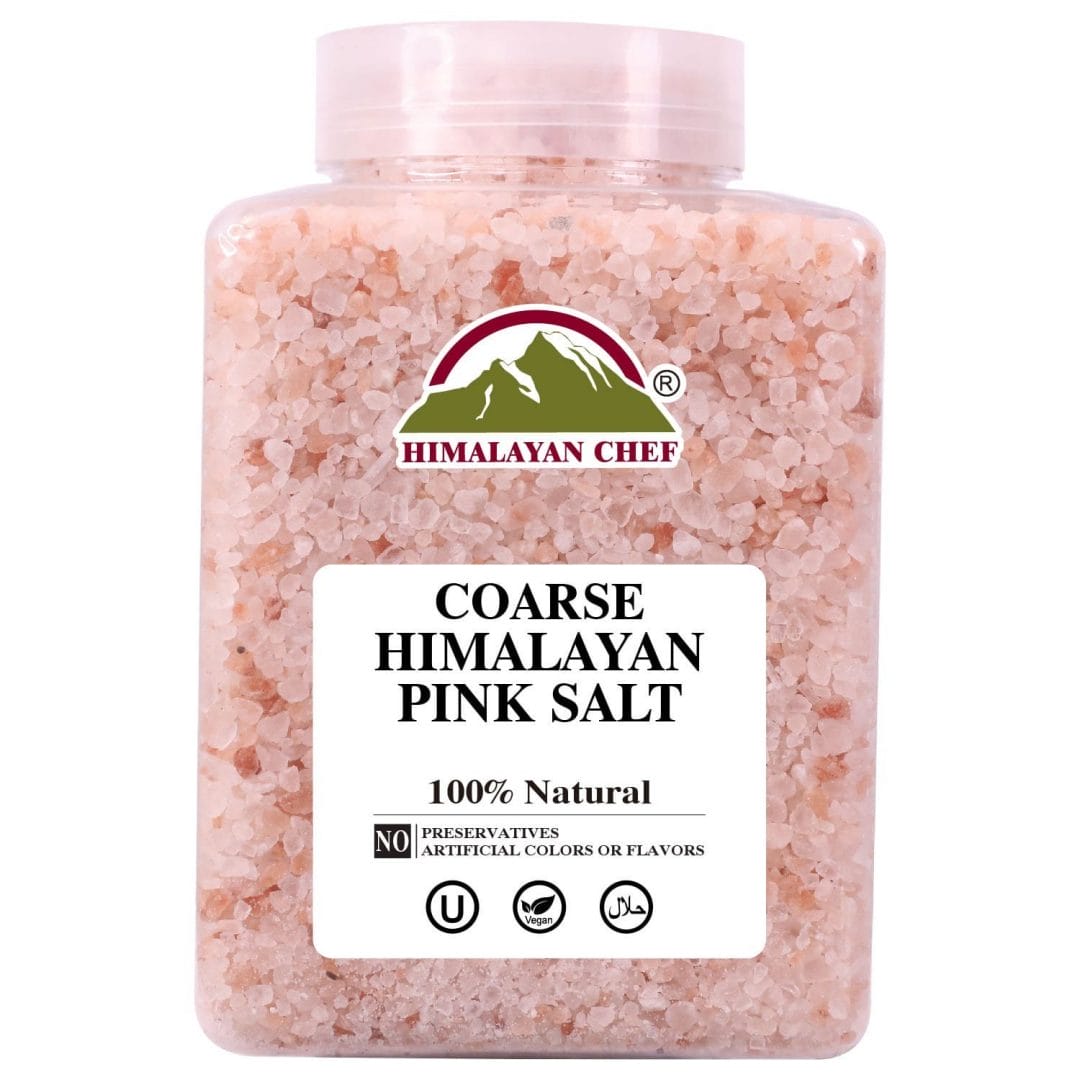 | 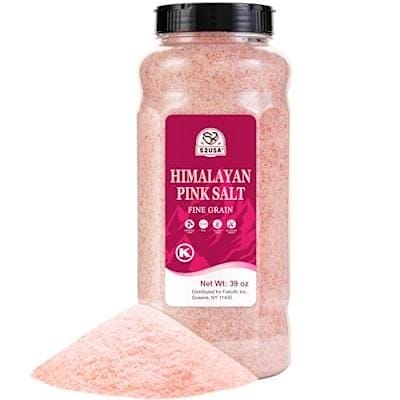 |
Himalayan Chef Himalayan Pink Salt Fine Grain, Plastic Jar-5 lbs | Himalayan Chef Pink Himalayan Salt Coarse Grain, Plastic Jar - 5 lbs. For Refill Grinders | 52USA Himalayan Pink Salt, Fine Grain, 39oz (2.4 LB), Pink Himalayan Sea Salt |
What Is Pink Himalayan Salt?
Pink Himalayan salt is often considered one of the purest forms of salt available today, and it has earned a respected place in both culinary and wellness spaces. This kind of salt is mined from ancient underground salt deposits in the Khewra Salt Mine, located in the Himalayan mountain range of Pakistan. These salt deposits date back millions of years, formed from evaporated prehistoric seas that left behind rich layers of salt and pink Himalayan salt crystals beneath the Earth’s surface. Many believe these origins are part of what contributes to the health benefits of pink Himalayan salt.
What makes this salt so unique—and contributes to the health benefits of pink Himalayan salt—is its attractive pink hue, which comes from the presence of minerals and trace elements like iron, potassium, calcium, and magnesium. These healthy minerals, although present in small amounts, are thought to give Himalayan salt its added nutritional appeal compared to regular salt or ordinary table salt, which is heavily refined and stripped of most natural content. These distinctions form the foundation of many claimed health benefits of pink Himalayan salt in wellness practices.
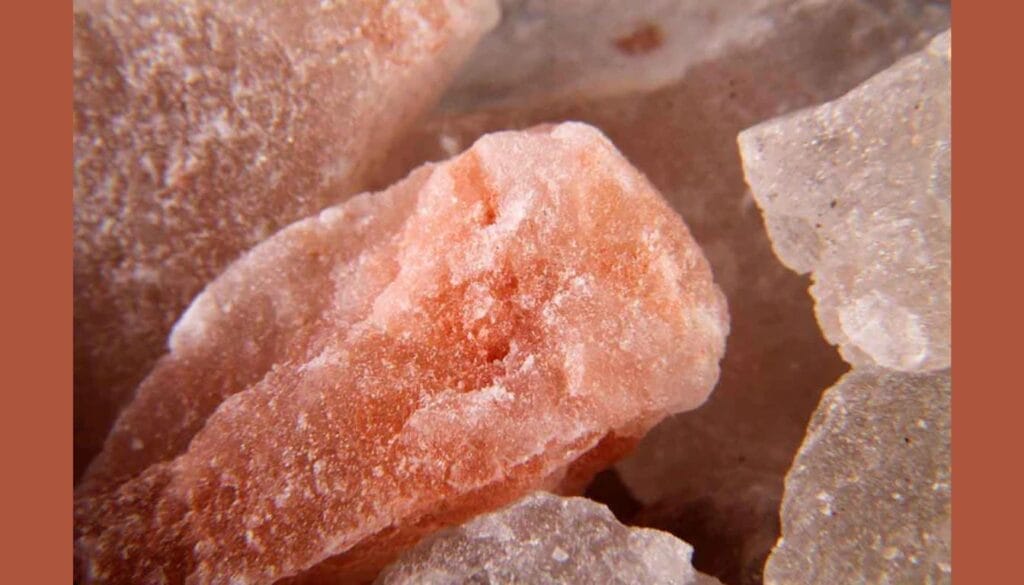
Unlike kosher salt or sea salt, pink Himalayan salt contains over 80 minerals found in pink salt samples, making it a mineral-dense unrefined salt. This salt is harvested by hand and minimally processed, preserving the natural salt crystals in their original state. The health benefits of pink Himalayan salt also stem from its versatility: it’s used not only in cooking but also in salt lamps, salt caves, and spa treatments, showing its widespread appeal in wellness spaces.
While many health claims surround Himalayan salt—such as detoxification, improved hydration, and better respiratory health—the proven health benefits of pink Himalayan salt are closely tied to its mineral content and natural origins. However, like all salts, Himalayan crystal salt still contains sodium, and consuming too much salt, even in natural forms, can lead to side effects like high blood pressure. So while Himalayan salt may be better than regular salt in terms of trace nutrients, moderation is essential for safely enjoying the health benefits of pink Himalayan salt.
In the next section, we’ll break down exactly what pink Himalayan salt contains and explore its salt benefits in more detail to see how it supports overall health, contributing further to the health benefits of pink Himalayan salt.
Nutritional Profile: What Pink Himalayan Salt Contains
One of the standout health benefits of pink Himalayan salt is its impressive range of trace minerals and elements that contribute to overall wellness. While salt contains sodium—a necessary nutrient for nerve and muscle function—the health benefits of pink Himalayan salt are elevated because Himalayan salt also contains many healthy minerals that are typically missing from ordinary table salt or even sea salt. These nutrients support the body in various ways, making it a favorite in natural health circles.
Mined deep from the Himalayan mountains, this natural mineral salt is packed with over 80 minerals and trace elements, giving it its signature attractive pink hue. The health benefits of pink Himalayan salt are often attributed to these minerals found in pink salt, which are preserved due to its unrefined and minimally processed nature. The color of the salt, ranging from light pink to deep rose, reflects the presence of minerals like iron, potassium, calcium, and magnesium—all contributing to the widely recognized health benefits of pink Himalayan salt.
Here’s a snapshot of the key minerals Himalayan salt contains:
🧂 Key Minerals Found in Pink Himalayan Salt
| 🔬 Mineral | 💪 Function in the Body |
|---|---|
| Sodium | Regulates fluid balance and nerve transmission |
| Potassium | Helps with muscle contraction and heart function |
| Calcium | Supports bone health and nerve signaling |
| Magnesium | Aids metabolism, muscle relaxation, and sleep |
| Iron | Essential for oxygen transport in the blood |
| Zinc | Boosts immunity and supports enzyme function |
| Phosphorus | Important for energy production and bone health |
Although the quantities of these minerals are small, they still contribute to the nutritional benefits of Himalayan salt, especially when compared to finely ground pink salt or regular salt that lacks natural complexity. It’s important to note that much sodium can still be harmful, so moderation remains key.
In the next section, we’ll explore the 9 Himalayan pink salt health benefits and how this kind of salt may support your overall health when used wisely.
Top 9 Himalayan Pink Salt Health Benefits
Known for its attractive pink hue and rich mineral content, Himalayan pink salt is celebrated not only for its culinary uses but also for its potential to support overall health. Below, we explore the 9 Himalayan pink salt health benefits, based on scientific evidence and traditional uses.
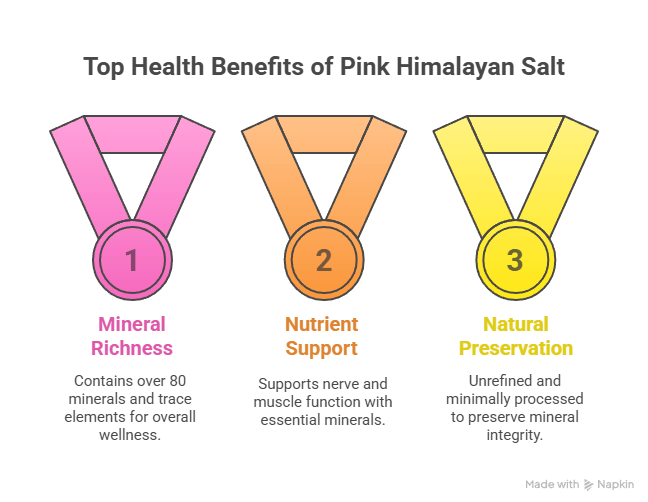
1. Salt Benefits for Hydration and Electrolyte Balance
Himalayan salt provides essential electrolytes like sodium, potassium, and calcium, which help the body use water effectively. When you use Himalayan salt in water and Himalayan salt mixtures like sole water, it may improve fluid absorption, preventing dehydration better than regular salt. This is especially helpful during fasting, workouts, or hot weather.
2. Respiratory Relief: Use Himalayan Salt for Clearer Breathing
Found in salt caves and salt lamps, Himalayan salt is often used in halotherapy, where people inhale salt air to relieve asthma, allergies, and sinus congestion. Salt and Himalayan elements have antibacterial properties that may help clear airways and reduce inflammation.
3. Sleep Better: Pink Himalayan Salt Contains Sleep-Enhancing Minerals
Magnesium, calcium, and potassium—minerals found in pink salt—may contribute to better sleep by calming the nervous system. The salt is also thought to help reduce cortisol levels, the stress hormone that can interfere with restful sleep. People even use pink Himalayan salt with honey before bed to regulate stress responses.
4. Digestive Support: How This Mineral-Rich Salt Aids Digestion
Salt used before meals may stimulate stomach acid and enzymes, supporting digestion and nutrient absorption. Himalayan salt contains trace minerals that activate salivary glands and promote gut balance. Compared to ordinary table salt, it may be gentler on the stomach and less irritating to sensitive guts.
5. Skin Health and Detox: Benefits of Himalayan Salt Baths and Scrubs
When used in baths or scrubs, Himalayan crystal salt can reduce inflammation, soften skin, and support detox through osmosis. Salt is essential in pulling toxins from tissues and soothing skin conditions like eczema. Many skincare routines now include finely ground pink salt for gentle exfoliation.
6. Detox Benefits of Himalayan Salt
Himalayan salt comes from ancient salt deposits untouched by pollutants. Rich in minerals and trace elements, it supports the body’s natural detoxification systems. Combined with water and Himalayan salt, it may help flush heavy metals and promote cellular cleansing.
7. Blood Pressure and Sodium: Himalayan Pink Salt Side Effects to Watch
Although marketed as healthier, salt contains sodium—and excess salt from any kind, including salts like Himalayan, could still lead to high blood pressure. However, due to its less processed nature and trace minerals, some studies suggest it may be better than regular salt when consumed in moderation.
8. Boosts Nutrient Absorption and pH Balance
One of the lesser-known health benefits of Himalayan salt is its role in balancing the body’s pH. This kind of salt may support an alkaline environment, promoting better nutrient uptake and immune health. Compared to sea salt, it’s more mineral-dense and less exposed to modern ocean pollutants.
9. Enhances Flavor and Reduces the Need to Add More Salt
Due to its intense flavor and salt crystals, Himalayan salt is made of naturally occurring compounds that enhance dishes without requiring you to add more salt. Many chefs prefer it for its texture, mineral taste, and visual appeal. It’s also considered a healthier culinary option over processed salt available on the market.
How to Use Pink Himalayan Salt Daily
The health benefits of pink Himalayan salt make it a popular choice for everyday use. From meals to skincare, many use Himalayan salt daily to enhance wellness, thanks to its natural minerals and versatility.
🧂 1. Culinary Uses: Flavor with Health in Mind
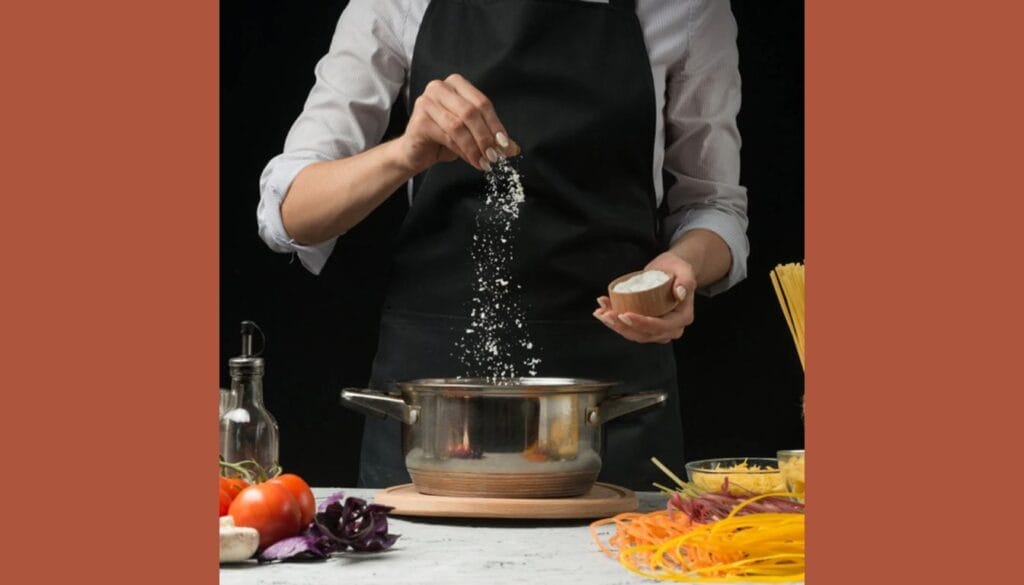
Experience the health benefits of pink Himalayan salt in cooking. It contains 80+ minerals and offers richer flavor than ordinary table salt.
- Cooking and Seasoning: Use as a finishing salt for grilled meats, roasted vegetables, and soups.
- Sole Water: Mix Himalayan salt with water to create an ancient detox drink believed to support hydration and electrolyte balance.
- Salt Blocks for Cooking: Heat-resistant salt slabs can be used to sear fish, meats, or even desserts.
- Homemade Electrolyte Drinks: Combine with lemon juice, honey, and water for a natural energy booster.
🛁 2. Skincare: Mineral Therapy for Your Skin

The health benefits of pink Himalayan salt include skincare. Himalayan crystal salt has antibacterial and anti-inflammatory properties for healthy skin.
- Salt Scrubs: Mix with coconut oil or olive oil to exfoliate dead skin.
- Detox Baths: Add 1–2 cups of finely ground pink salt to warm water to soothe muscles and remove toxins.
- Foot Soaks: Ideal for swelling, odor, and stress relief after a long day.
- DIY Face Mist (Salt Water Spray): Mix a pinch of salt with distilled water to refresh and tone skin.
🧘♀️ 3. Home Wellness Uses: Purify and Relax

Enjoy the health benefits of pink Himalayan salt at home. Beyond food and skincare, it purifies air and promotes relaxation..
- Salt Lamps: Popular for their attractive pink glow, they’re believed to purify air and promote relaxation.
- Aromatherapy Salt Bowls: Warm bowls of Himalayan salt crystals can diffuse essential oils.
- Salt Inhalers: Portable and used to support clearer breathing and sinus relief.
Whether you’re looking to cook smarter, care for your skin naturally, or simply relax, Himalayan salt benefits reach far beyond the spice rack. The next section will tackle common myths and misconceptions to help you separate science from hype.
Common Myths About Himalayan Crystal Salt
While the health benefits of pink Himalayan salt are popular, some claims are exaggerated. Let’s debunk the myths and reveal the facts.
Myth 1: Himalayan Salt Contains 84 Essential Minerals That the Body Needs
While the health benefits of pink Himalayan salt are linked to its 80+ minerals, the amounts are too small to offer major nutritional value. The amounts are extremely small—too small to provide significant nutritional impact. You’d have to eat dangerous amounts of salt to meet even a fraction of your daily mineral needs.
👉 Reality: These minerals add flavor and color, but they don’t replace a healthy diet or mineral supplements.
Myth 2: Himalayan Salt Detoxifies the Body
Though often linked to the health benefits of pink Himalayan salt, there’s no scientific proof that salt baths or sole water truly detoxify the body.
👉 Reality: Your liver and kidneys are your body’s detox system—not salt baths.
Myth 3: It’s Sodium-Free or Safer for People with High Blood Pressure
Despite the health benefits of pink Himalayan salt, it still contains sodium. Excess intake can lead to high blood pressure, just like any other salt.
👉 Reality: It’s still salt, and moderation is essential—whether you’re using pink, sea salt, or regular salt.
Myth 4: It’s the Best Type of Salt for Everyone
Although the health benefits of pink Himalayan salt are well-known, it’s not ideal for everyone. It lacks enough iodine and may not suit all dietary needs.
👉 Reality: The “best salt” depends on individual needs and health conditions.
Who Should Be Cautious with Pink Himalayan Salt?
While the health benefits of pink Himalayan salt are praised, it’s still salt—and salt contains sodium. Excess intake can cause side effects, especially for some people. Himalayan salt may offer a few added health benefits, it’s not without risks for certain groups of people.
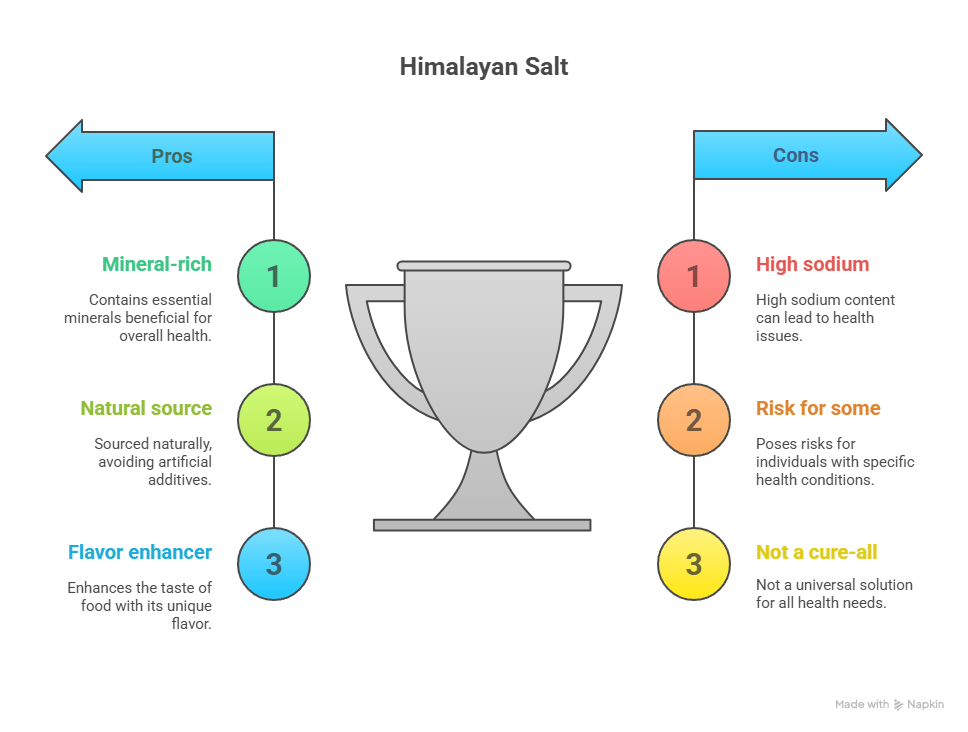
1. People with High Blood Pressure or Cardiovascular Disease
Despite the health benefits of pink Himalayan salt, it contains sodium similar to regular salt. Too much can raise blood pressure and strain the heart.
👉 Tip: Always check with your doctor if you’re on a low-sodium diet—even salts like Himalayan can be harmful in large amounts.
2. Individuals with Kidney Conditions
Although the health benefits of pink Himalayan salt are notable, those with kidney issues should limit intake, as excess sodium can worsen fluid retention and blood pressure.
👉 Caution: Limit your intake of salt products, even if they’re labeled “natural” or “mineral-rich.”
3. People at Risk of Iodine Deficiency
Despite the health benefits of pink Himalayan salt, it lacks sufficient iodine. Those at risk of deficiency—like children and pregnant women—may need iodized salt.
👉 Advice: If you’ve switched to Himalayan crystal salt exclusively, consider supplementing with iodine-rich foods like seaweed, dairy, or iodized salt.
4. Those Believing in Overuse for Detox or Wellness
While the health benefits of pink Himalayan salt are real, overusing it in diets, baths, or drinks can lead to bloating, dehydration, and electrolyte imbalances.
👉 Reminder: Even Himalayan pink salt side effects can include nausea, cramps, or kidney strain when consumed irresponsibly.
5. Individuals with Sodium-Sensitive Conditions
People with certain metabolic disorders, migraines, or autoimmune diseases may be more sensitive to salt’s effects on inflammation and fluid retention.
Bottom Line:
Pink Himalayan salt is still salt. While it can be a smart alternative to processed options, its side effects are real and should not be overlooked. If you’re managing a medical condition, always consult a healthcare provider before making major dietary changes involving any type of salt.
Pink Himalayan Salt vs. Table Salt vs. Sea Salt
When it comes to choosing the right salt, consumers are often faced with several options—each claiming unique health and culinary benefits. But how do pink Himalayan salt, table salt, and sea salt truly compare? Below is a detailed breakdown to help you understand their differences in terms of mineral content, processing, sodium levels, and health benefits.
| Feature | Pink Himalayan Salt | Table Salt | Sea Salt |
|---|---|---|---|
| Source | Mined from ancient salt deposits in the Himalayan mountains (Khewra, Pakistan) | Mined or evaporated, then heavily processed | Evaporated from modern seawater |
| Processing | Unrefined, hand-mined, no additives | Refined, often includes anti-caking agents and iodine | Varies—can be refined or unrefined |
| Mineral Content | Contains 80+ trace minerals (e.g., iron, calcium, magnesium) | Mostly sodium chloride, lacks natural minerals | Some minerals; depends on source |
| Color | Pink due to iron oxide and trace elements | White, sometimes bleached | Off-white or gray |
| Flavor | Subtle, earthy, mineral-rich taste | Sharp and salty | Varies—mild to strong, depending on origin |
| Common Uses | Cooking, finishing salt, salt blocks, bath soaks, salt lamps | Everyday cooking and baking | Cooking, finishing, gourmet dishes |
| Health Benefits | Supports hydration, digestion, skin, and detox. Core to the Health Benefits of Pink Himalayan Salt | Provides iodine if fortified, but lacks natural minerals | Contains some minerals; minimal health benefits |
🧂 1. Source and Harvesting Process
- Pink Himalayan Salt:
Sourced from ancient salt deposits in the Himalayan mountains (mainly the Khewra Salt Mine in Pakistan). It’s hand-mined and minimally processed, keeping its natural minerals and trace elements intact. - Table Salt:
Derived from either underground salt mines or seawater, then heavily refined. During processing, most minerals are stripped, and iodine and anti-caking agents are added. - Sea Salt:
Harvested through the evaporation of seawater. Less processed than table salt, but can be contaminated by ocean pollutants like microplastics.
🧪 2. Mineral Content and Trace Elements
- Himalayan Salt Contains:
Over 80 trace minerals, including potassium, magnesium, calcium, and iron, which give it its pink hue and mild flavor. - Table Salt Contains:
Primarily sodium chloride with iodine added synthetically. Lacks most natural minerals. - Sea Salt Contains:
Small amounts of minerals, but typically less than Himalayan salt. Mineral content depends on the water source.
⚖️ 3. Sodium Content and Health Impact
- All three salts contain sodium, typically around 97–99% sodium chloride.
- Pink Himalayan salt may have slightly less sodium per gram due to its crystal structure, meaning you could use less by volume.
- However, excessive intake of any kind of salt—even salts like Himalayan—could lead to high blood pressure, bloating, or fluid retention.
🍽️ 4. Culinary Uses and Taste
- Himalayan Salt:
Subtle, earthy flavor. Popular in gourmet cooking and often sold as salt blocks, grinders, or finely ground pink salt. - Table Salt:
Has a sharp, clean taste. Commonly used in everyday cooking and baking. Often adds more saltiness due to finer texture. - Sea Salt:
More robust taste and texture. Used as a finishing salt to enhance flavor and texture in dishes.
💡 5. Added Ingredients and Processing
- Himalayan Salt: No additives. It’s a natural, unrefined salt.
- Table Salt: Often contains anti-caking agents, bleach, and added iodine.
- Sea Salt: May be refined or unrefined, depending on the brand. Can contain marine impurities.
✅ Final Verdict: Which Salt Is Best?
- If you’re looking for natural mineral content and minimal processing, pink Himalayan salt is a strong contender.
- If you have an iodine deficiency, table salt remains necessary unless you’re supplementing through other foods.
- For a clean finish and crunch, sea salt may be your choice—just be mindful of sourcing.
👉 Remember: No matter what type of salt you choose, moderation is key. All salts are high in sodium, and overconsumption can result in health issues like high blood pressure and water retention.
Where to Buy the Best Pink Himalayan Salt Products
When it comes to purchasing authentic pink Himalayan salt, quality, sourcing, and packaging matter. That’s why buying from Amazon is a smart choice. With thousands of verified reviews, detailed product descriptions, and competitive pricing, Amazon makes it easy to compare Himalayan salt products—from finely ground pink salt for cooking to decorative salt lamps, salt blocks, and even bath soaks. Many top-rated sellers on Amazon clearly indicate the origin of the salt (like Khewra Mines in Pakistan), ensuring you’re getting genuine Himalayan crystal salt, not a cheap substitute. Plus, with fast shipping, secure payment options, and a return policy you can trust, Amazon offers convenience and peace of mind. Whether you’re seeking high-purity culinary salt, spa-quality bath crystals, or mineral-rich detox blends, Amazon has a wide selection that lets you shop confidently from the comfort of your home.
 |  | 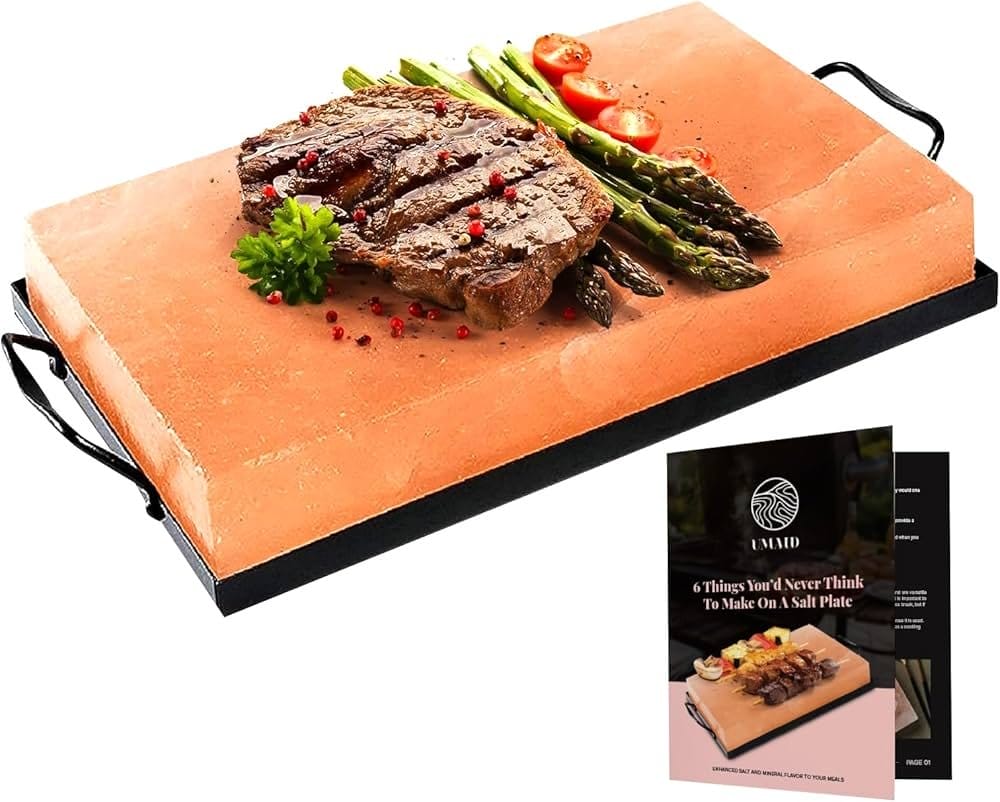 |
Spantik Professional Salt Block Set with Steel Tray 12" x 8" x 1.5" Himalayan Cooking Plate | Spantik Himalayan Salt Block Cooking Plate 12 x 8 x 1.5 Inch for Cooking Grilling Cutting | UMAID Himalayan Salt Block Cooking Plate 12x8x1.5 for Cooking, Grilling, Cutting and Serving |
Conclusion: Final Thoughts on the Health Benefits of Himalayan Pink Salt
The growing popularity of Himalayan pink salt is no coincidence. Known for its mineral content and natural purity, this type of salt offers more than just a pretty appearance. The Health Benefits of Pink Himalayan Salt range from improved hydration and better digestion to skin nourishment and respiratory support, making it a smart, multi-functional choice for wellness enthusiasts.
Unlike regular table salt, which is heavily processed and stripped of its natural elements, Himalayan crystal salt is hand-mined from ancient salt deposits in the Himalayan mountains and retains over 80 trace minerals. These include essential nutrients like calcium, potassium, magnesium, and iron—all of which contribute directly to the Health Benefits of Pink Himalayan Salt and its increasing use in natural health practices.
That said, Himalayan salt contains sodium, and like any salt, overuse can lead to high blood pressure or other health concerns. While the Health Benefits of Pink Himalayan Salt are impressive, they should be seen as complementary—not curative. Moderation is key.
Incorporating pink Himalayan salt into your cooking, skincare, or relaxation routines allows you to enjoy its flavor, beauty, and wellness potential while supporting your overall health naturally.
FAQs
Q. Is pink Himalayan salt better than regular salt?
Ans. Yes, pink Himalayan salt is considered better than regular salt in terms of purity, mineral content, and natural composition. Unlike ordinary table salt, which is heavily processed, Himalayan crystal salt retains minerals and trace elements. This mineral richness contributes directly to the Health Benefits of Pink Himalayan Salt, though both types contain sodium and should be used in moderation.
Q. What are the main Health Benefits of Pink Himalayan Salt?
Ans. The primary Health Benefits of Pink Himalayan Salt include enhanced hydration, improved digestion, reduced muscle cramps, clearer skin, natural detox support, and better sleep. These benefits are due to its content of essential minerals like magnesium, potassium, calcium, and iron.
Q. Can Himalayan pink salt help lower blood pressure?
Ans. Though Himalayan salt contains sodium, some believe its mineral profile contributes to more balanced sodium processing. However, excess intake of any salt can raise blood pressure. The Health Benefits of Pink Himalayan Salt do not include blood pressure reduction unless it is consumed in moderation as part of a balanced diet.
Q. Does Himalayan pink salt contain iodine?
Ans. Pink Himalayan salt contains trace levels of iodine, but not enough to meet daily requirements. For those at risk of iodine deficiency, the Health Benefits of Pink Himalayan Salt do not replace the need for iodized salt or iodine-rich foods.
Q. How can I use Himalayan salt for skincare?
Ans. You can use Himalayan pink salt in scrubs, detox baths, and facial masks. The minerals found in the salt gently exfoliate, detoxify, and soothe the skin. These skincare benefits are among the most recognized Health Benefits of Pink Himalayan Salt in natural wellness practices.
Q. Is it safe to drink Himalayan salt water daily?
Ans. Drinking Himalayan salt water (or sole water) may support digestion, hydration, and mineral balance. To safely enjoy the Health Benefits of Pink Himalayan Salt, consume it in moderation to avoid excessive sodium intake.
Q. Are there any side effects of Himalayan pink salt?
Ans. Despite the many Health Benefits of Pink Himalayan Salt, excessive intake may lead to high blood pressure, kidney issues, and fluid retention. It’s essential to use it mindfully and consult a healthcare provider if you have related health concerns.
Q. Can I cook with Himalayan salt every day?
Ans. Yes, daily use of Himalayan pink salt in cooking is safe when done in moderation. Its unique mineral profile not only adds flavor but also supports several Health Benefits of Pink Himalayan Salt, especially when replacing refined table salt.
Q. What makes Himalayan pink salt pink?
Ans. The distinctive pink color of Himalayan pink salt comes from iron oxide and a variety of trace minerals. These components enhance the salt’s nutritional value and are central to the Health Benefits of Pink Himalayan Salt.


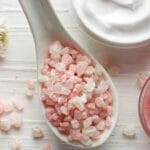


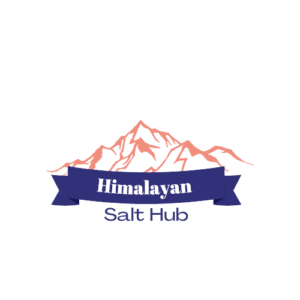
Nice Article